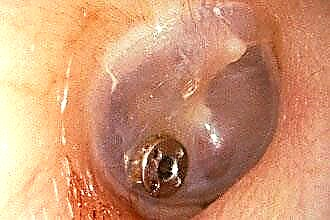In this article we will talk about whether purulent sore throat is contagious. Let's start with the fact that it belongs to infectious diseases. Most often, streptococci are the causative agents, less often staphylococci are the cause of a bacterial disease. Moreover, the statements that purulent tonsillitis is not contagious are a delusion.
 Regardless of the pathogen that caused the disease, it is contagious, as well as the vast majority of viral or bacterial infections. Therefore, it is highly likely that after contact with a patient who has been diagnosed with bacterial sore throat, infection will occur, but the infection does not necessarily cause this particular disease.
Regardless of the pathogen that caused the disease, it is contagious, as well as the vast majority of viral or bacterial infections. Therefore, it is highly likely that after contact with a patient who has been diagnosed with bacterial sore throat, infection will occur, but the infection does not necessarily cause this particular disease.
Modes of transmission
Is purulent sore throat contagious? Yes, angina is a contagious disease, and it does not matter in what form it proceeds. The thing is that the causative agent in both cases is the same bacterium, which, depending on its location in the tonsils, can provoke the formation of abscesses. Moreover, it is not at all necessary that after contact with a patient, the disease will proceed in a similar way.
Important! Purulent tonsillitis can also occur as a result of contact with a patient in whom the disease proceeded easily, without the formation of abscesses.
Also, getting a streptococcal infection into the body does not at all guarantee the development of inflammation and subsequent disease. There are many factors causing the appearance of purulent sore throat. Moreover, in order for a person to get sick, most of them must be present at the same time. It turns out that after the virus enters the body, the disease may not occur at all.
Causes of the disease
For infection with a sore throat, it is necessary that the corresponding virus gets into the body. After the virus has entered the body, one of the following conditions must be present for the onset of the disease:
- disorders in the immune system. An organism weakened by various diseases or an unhealthy diet can significantly weaken the immune system. An unprepared immune system is most often found in children, whose bodies find it difficult to cope with the causative agent of the disease that he has not previously encountered. In this case, the child's immune system cannot respond in a timely manner to the causative agent of sore throat as a dangerous bacterium. It is for this reason that children are more likely to get sick than adults.
 recent diseases. Various diseases have a significant negative effect on immunity, after which the bacteria that cause sore throat are much more likely to survive and remain in the human body.
recent diseases. Various diseases have a significant negative effect on immunity, after which the bacteria that cause sore throat are much more likely to survive and remain in the human body.- the use of drugs such as fungicides, antibiotics, and other substances that can significantly disrupt the bacterial balance in the tissues of the body, especially in the nasopharynx, often leads to the active reproduction of dangerous bacteria. So, for example, under normal conditions in the tonsils there are both harmless fungi and staphylococci, while the fungi inhibit the development of staphylococci, not allowing them to actively develop. After taking antibiotics, staphylococcal inhibitors disappear, which causes inflammation.
Also, quite often, angina occurs in cases where streptococcus is constantly present in the tonsils, which is manifested by frequent or chronic tonsillitis. In a similar situation, angina can occur without direct infection. In this case, the only cause of the disease may be a simple weakening of the immune system, because the bacterium is already present in the body. Therefore, if angina occurs in such conditions, then this is not an infection, but rather an exacerbation of chronic inflammation of the tonsils.
Various unfavorable factors can provoke infection, due to a weakening of the immune system. They also often become the main cause of exacerbation of chronic tonsillitis. However, if there are no bacteria in the body that can cause angina, then no amount of hypothermia can provoke the onset of this disease. To understand if you have a streptococcal infection in your body, remember how many times in the past year you have had a sore throat. If the last time you had a purulent sore throat was several months ago, it is likely that you have chronic tonsillitis.
Important! Purulent sore throat does not appear due to hypothermia, a glass of cold milk drunk or after sitting in a draft.
Risk groups for the incidence of angina
It is worth noting that, depending on the characteristics of the immune system, for some the disease may be more infectious, for others it may be less infectious. So, most often children suffer from angina, since the child's body is more susceptible to various kinds of infections. Moreover, in those children who first meet with streptococcus, the likelihood of the disease is much higher. Whereas in a child who has already had a sore throat, the risk of re-infection and the occurrence of the disease is much lower.
susceptible to various kinds of infections. Moreover, in those children who first meet with streptococcus, the likelihood of the disease is much higher. Whereas in a child who has already had a sore throat, the risk of re-infection and the occurrence of the disease is much lower.
The risk of contracting purulent sore throat is higher in those who
- has various immune disorders,
- is currently sick with other diseases of the nasopharynx;
- leads an unhealthy lifestyle, adheres to a strict diet and does not receive a balanced diet, without which the full functioning of the immune system is impossible.
However, you can get sick even if you follow the correct diet and an active lifestyle. After all, these measures only reduce the likelihood of infection, by increasing the body's ability to resist viruses and bacteria.
Ways of transmission of the disease
Let's now find out how purulent sore throat is transmitted. Most often, the disease is transmitted by airborne droplets. The thing is that saliva contains a large number of harmful bacteria, which are easily spread by sneezing and coughing. But coughs and runny nose, as a rule, are not characteristic of angina. Therefore, the main ways of spreading the disease are as follows:
- food transmission, in the preparation of which the carrier of the infection participated;
- infection by means of sharing hygiene items, dishes, etc.;
- transmission of the pathogen by direct contact with the carrier.
Important! Angina can be contracted after contact with a patient with scarlet fever, because these diseases are the result of the ingestion of one and the same bacteria - streptococcus.
How long to avoid contact with a sick person?
How long does it take after the pathogen enters the body for the first symptoms of angina to appear? It is known that the incubation period lasts from a few hours to a couple of days. Therefore, count how many days have passed since communicating with the patient. If more than three days have passed, you can breathe a sigh of relief, most likely this time your body was able to resist the virus.
It is also important to know how many days the patient is dangerous to others. Angina is contagious as long as the body temperature is elevated. If treated incorrectly, the patient will be contagious within seven to nine days. If the correct antibiotic therapy is carried out, then it may take from twelve hours to one and a half days to eliminate the disease.

 recent diseases. Various diseases have a significant negative effect on immunity, after which the bacteria that cause sore throat are much more likely to survive and remain in the human body.
recent diseases. Various diseases have a significant negative effect on immunity, after which the bacteria that cause sore throat are much more likely to survive and remain in the human body.

